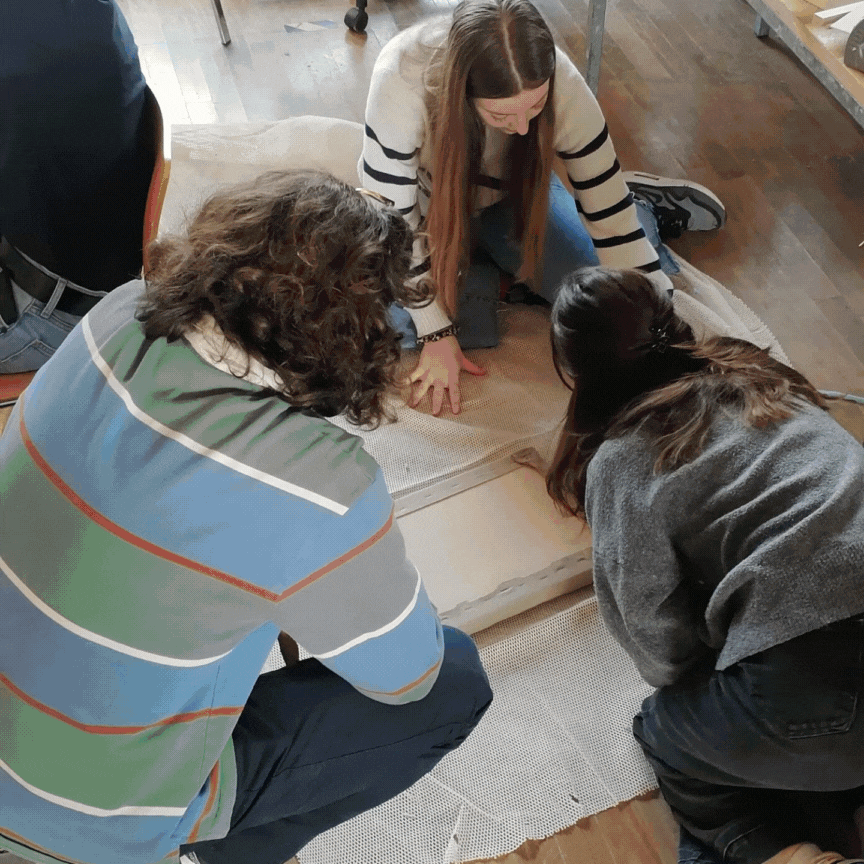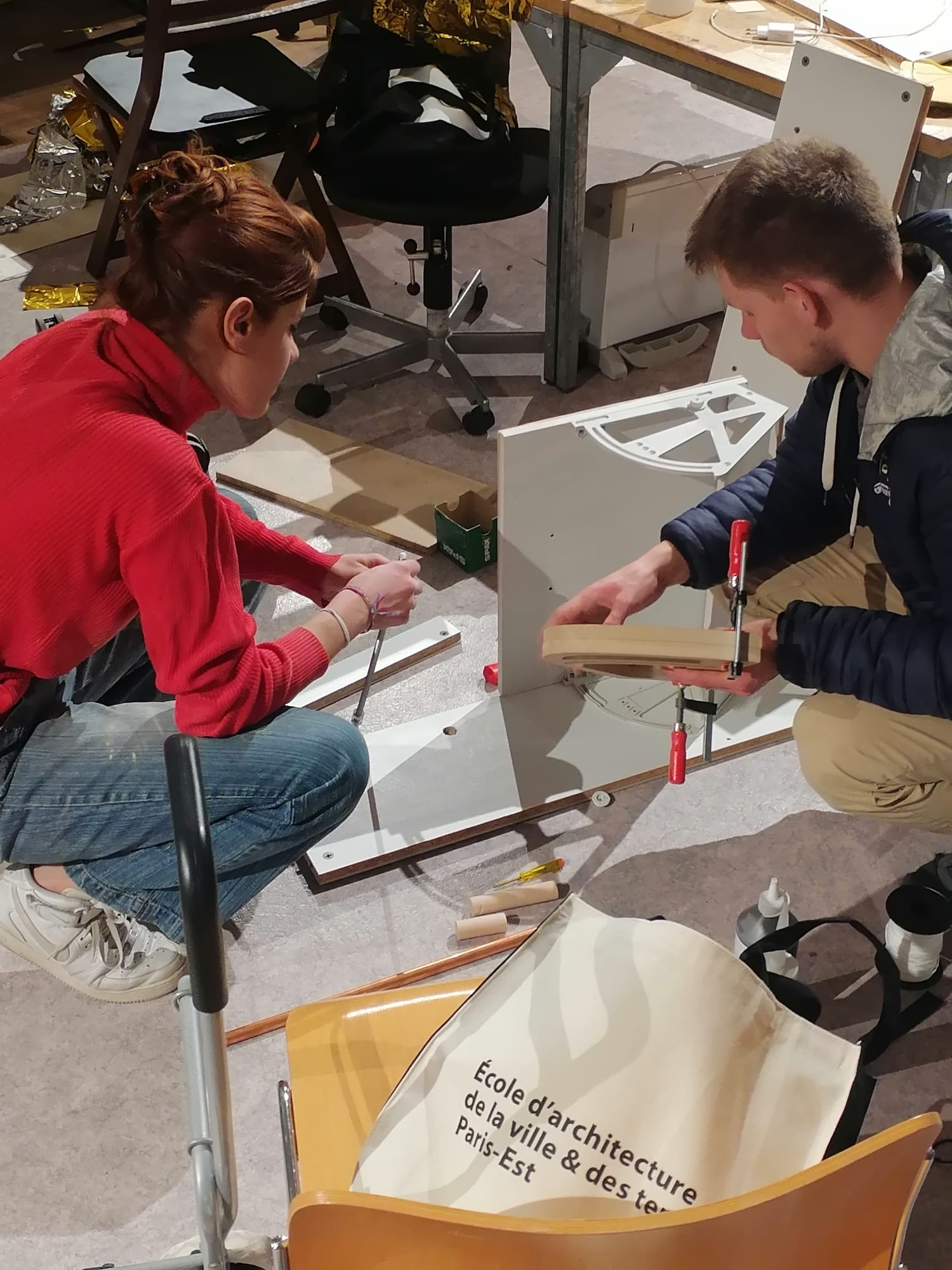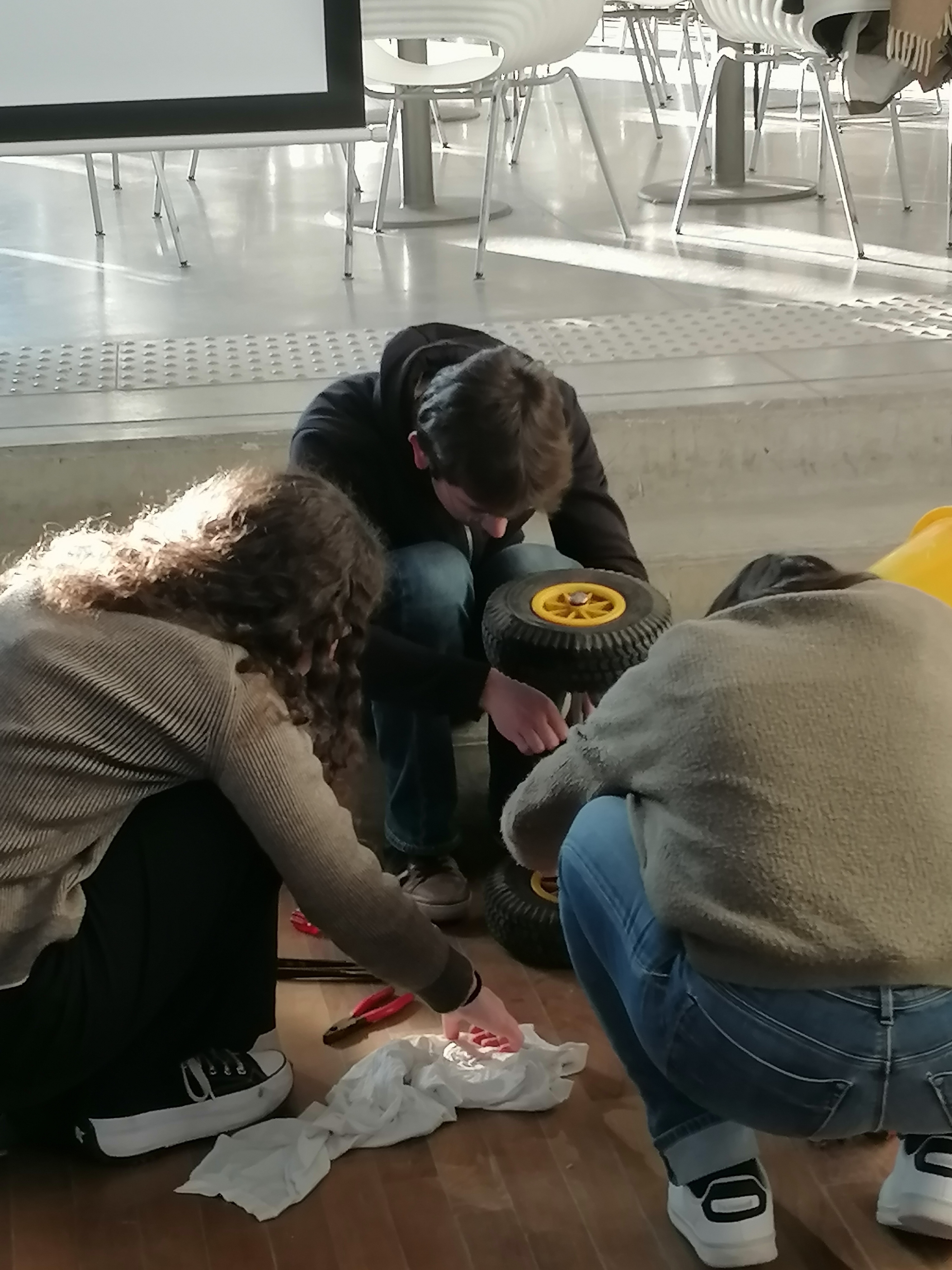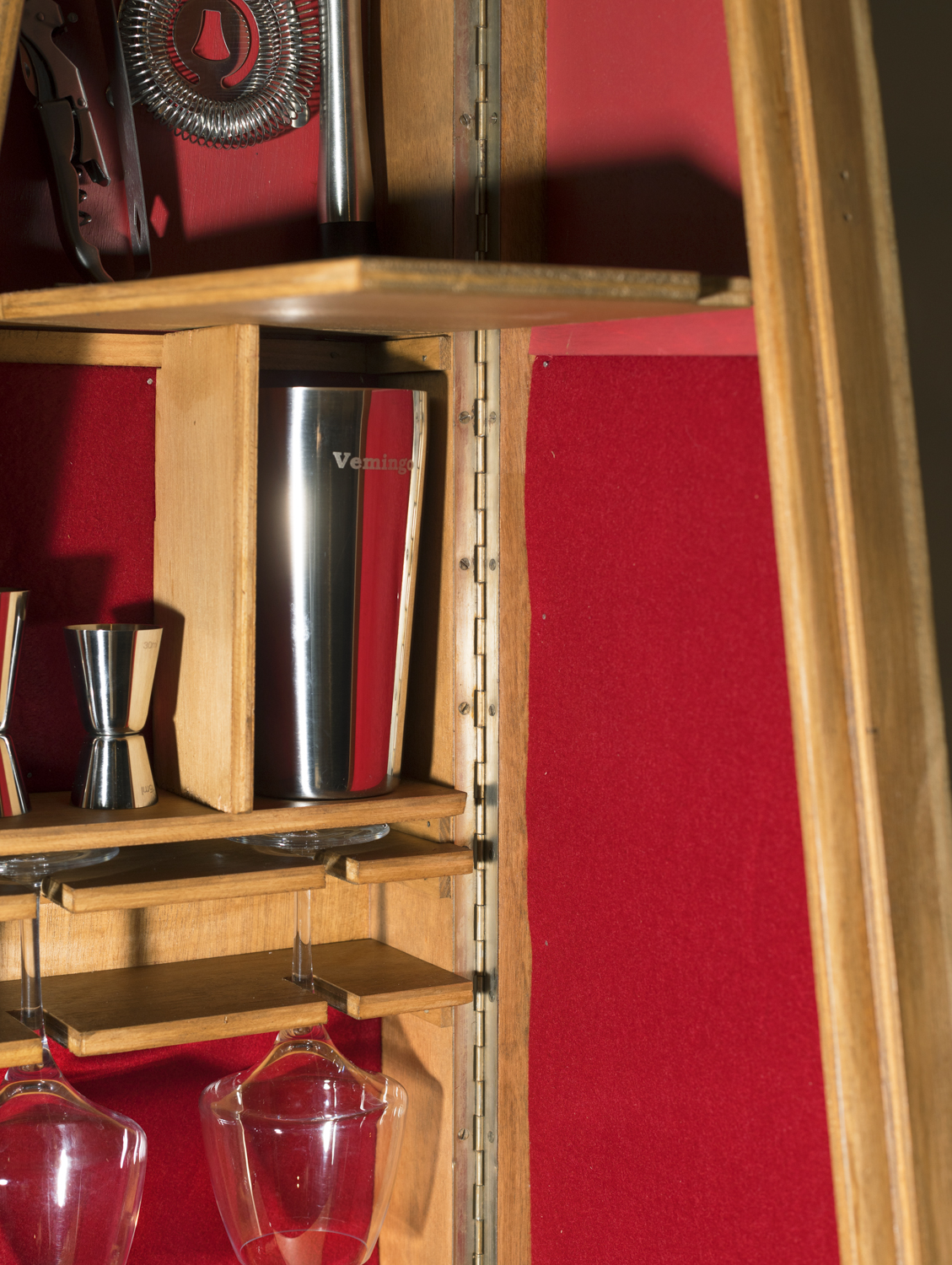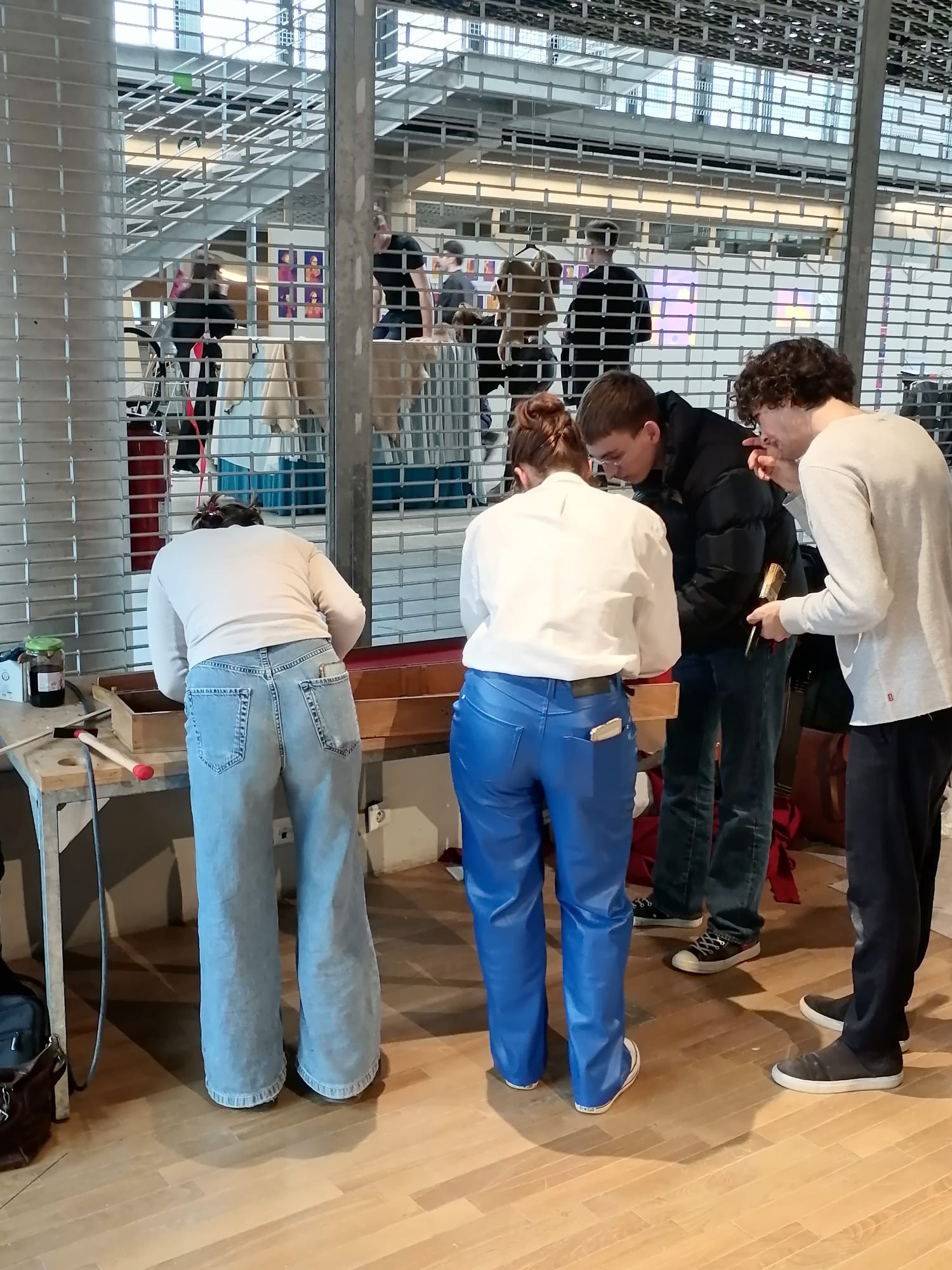In rural tradition, during winter time, families used to gather in the barn to mend clothes, repair farming tools and fix furnitures, while workers would travel around villages as experts of pottery and umbrellas repairing. As Michael Wolf photo series “Bastard chairs” (2002) portrays, repair continues to be a daily activity for people who needs to fight the programmed obsolescence of the products that the market offers.
CHER MÉTIS is a collective experiment of repairing, from the scale of the object to that of the space. CHER MÉTIS is exploring the territory, finding discarded resources, imagining new uses and new meanings, collecting memories and inventing new stories. CHER MÉTIS is creating knowledge, taking care of each other, activating the potential of artefacts.
Tracing the entire working process of each artefact is a way to narrate the relationship between the person repairing the object and the object itself, to share the expertise it requires, the steps it take to turn a rejected object into a new story.
CHER MÉTIS means “Dear Mestizo”, an ode to the hybrid forms of things, of transformations, of all that remains and that stratifies through time. MÉTIS is also a classic Greek term that designates knowledge acquired through practical experience. CHER MÉTIS is an anarchic act of salvation, an act of love for the objects that inhabit our lives, an act of love for what we produce, abandon, and rediscover over and over.
CHER MÉTIS is a collective experiment of repairing, from the scale of the object to that of the space. CHER MÉTIS is exploring the territory, finding discarded resources, imagining new uses and new meanings, collecting memories and inventing new stories. CHER MÉTIS is creating knowledge, taking care of each other, activating the potential of artefacts.
Tracing the entire working process of each artefact is a way to narrate the relationship between the person repairing the object and the object itself, to share the expertise it requires, the steps it take to turn a rejected object into a new story.
CHER MÉTIS means “Dear Mestizo”, an ode to the hybrid forms of things, of transformations, of all that remains and that stratifies through time. MÉTIS is also a classic Greek term that designates knowledge acquired through practical experience. CHER MÉTIS is an anarchic act of salvation, an act of love for the objects that inhabit our lives, an act of love for what we produce, abandon, and rediscover over and over.
CHER MÉTIS was conceived in the context of the Winter School 2023 at EAVT Peris Est, in February 2023, curated by Iris Lacoudre.
Students involved include: Elisa Venant, Lise Fourneyron, Axel Cutté, Quentin Martinet,
Mathis de Berranger, Flavy Marimon, Joanne Haerens, Imara Garine, Gaspard Besson,
Margot Genieys, Corentin Trzupek, Laure Catala, Lise Millet, Lila Parent, Corentin Trzupek, Fabien Aubert, Maxence Poirier
Students involved include: Elisa Venant, Lise Fourneyron, Axel Cutté, Quentin Martinet,
Mathis de Berranger, Flavy Marimon, Joanne Haerens, Imara Garine, Gaspard Besson,
Margot Genieys, Corentin Trzupek, Laure Catala, Lise Millet, Lila Parent, Corentin Trzupek, Fabien Aubert, Maxence Poirier
